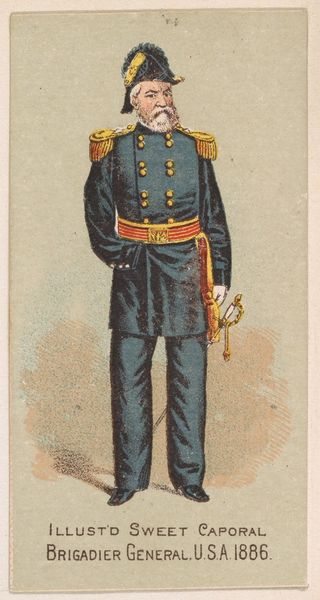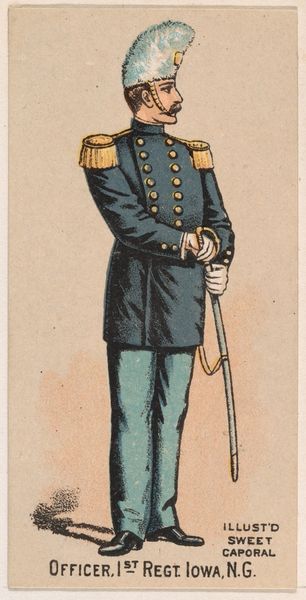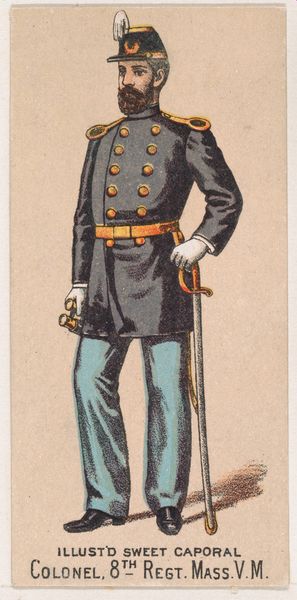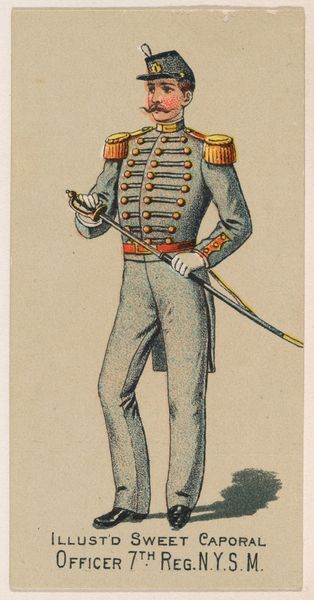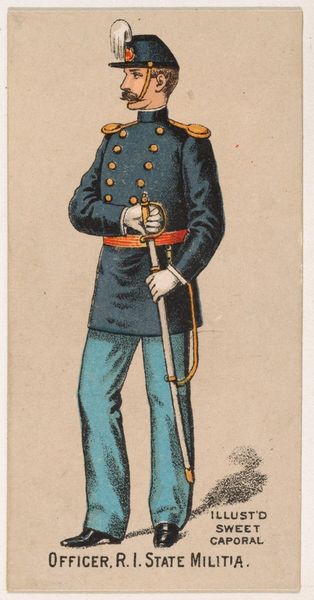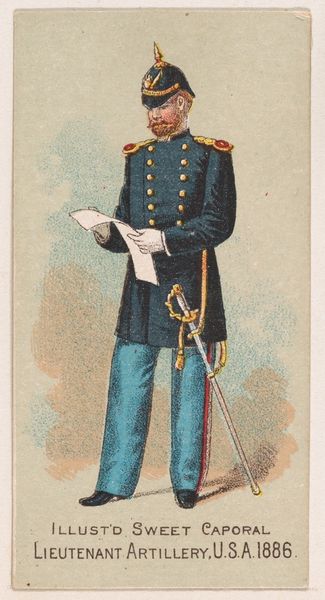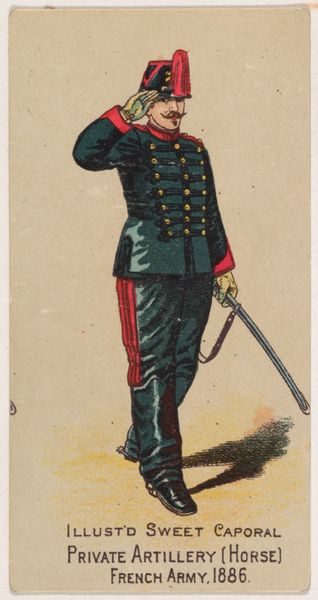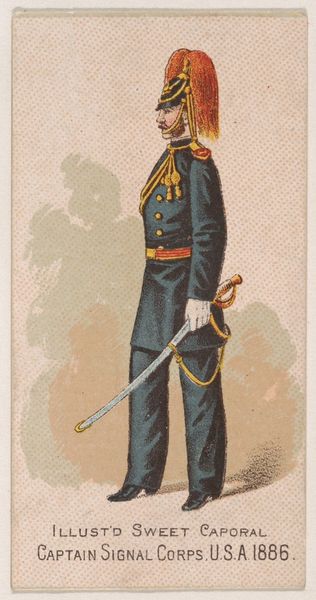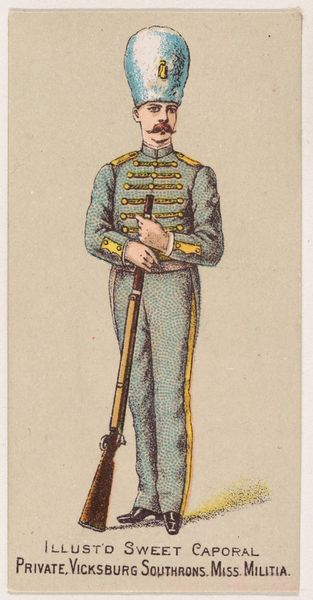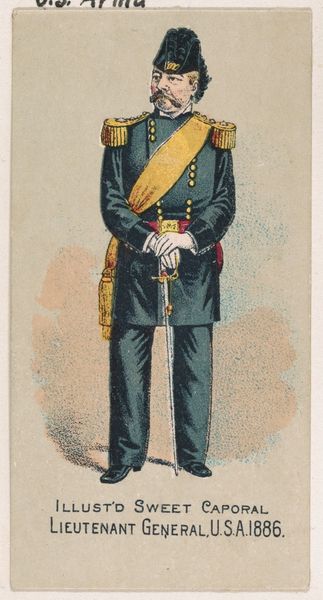
Aid de Camp, United States Army, 1886, from the Military Series (N224) issued by Kinney Tobacco Company to promote Sweet Caporal Cigarettes 1888
0:00
0:00
drawing, print
#
portrait
#
drawing
# print
#
caricature
#
caricature
#
men
#
genre-painting
#
history-painting
#
profile
Dimensions: Sheet: 2 3/4 × 1 1/2 in. (7 × 3.8 cm)
Copyright: Public Domain
Editor: Here we have "Aid de Camp, United States Army, 1886," a print drawing dating from 1888 by the Kinney Brothers Tobacco Company. What strikes me is that it’s more than just a portrait; it seems almost like a caricature made for mass consumption. How would you approach understanding this piece? Curator: For me, this print is a window into the mechanics of late 19th-century consumer culture. The Kinney Brothers Tobacco Company issued this "Military Series" to promote Sweet Caporal Cigarettes. So, think about it: a commercial product packaged with images that reinforce ideas about military authority and perhaps national identity. What kind of labor went into the creation of these images, reproduced on a massive scale, and consumed casually with a cigarette? Editor: That's a compelling point. I was focused on the individual depicted, but you're making me think about the systems behind its production and distribution. Curator: Exactly! And who was the intended audience? Was it primarily soldiers, or were they targeting a broader demographic eager to consume images of military prowess? Also, note the means of production. Printmaking allowed them to churn these out at high volumes and low cost. It collapses traditional notions of "art" when something like this becomes disposable. Where do you see the "art" in such a product? Editor: I suppose the artistic skill resides in the initial drawing or design, but its real value is in the reproduction process – the efficient creation of an image designed to move product. It makes me reconsider the role of art in shaping cultural values through everyday commodities. Curator: Precisely. These images were ubiquitous, silently shaping perceptions. And consider the materials themselves: paper, ink, the machines churning them out… All connected to networks of capital, labor, and consumption. Editor: This has completely reshaped my understanding; from simply viewing a portrait to analyzing it as a product of industrial-era commercialism. Thanks! Curator: And I was reminded how something as seemingly simple as a cigarette card reveals complex material and social relationships!
Comments
No comments
Be the first to comment and join the conversation on the ultimate creative platform.

